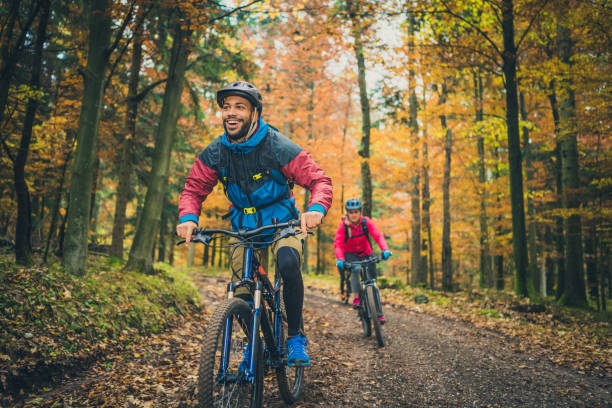Cycling offers numerous health benefits for the body. But anyone who’s spent many hours on the bike – at home, outdoors, or in Soul Cycle – knows that it can also have some unexpected effects on the body. Let’s take a look at the most common ones:
Chafing
One of the most common issues cyclists face is chafing. This pesky irritation arises due to the repetitive friction and moisture generated during cycling. It typically targets sensitive areas like the underarms, skin folds, and yes, the groin. Surprisingly, one common culprit behind chafing is wearing underwear with your cycling shorts or bibs. The friction between the two layers of fabric can lead to skin irritation.
To combat chafing, consider going commando, as in, skip the underwear. This eliminates the extra layer of fabric that can cause friction. Additionally, changing your riding position frequently can help distribute the pressure and reduce the likelihood of chafing. Ensuring that your cycling attire fits snugly but not too tightly can also make a significant difference in preventing this discomfort.
Saddle Sores
If chafing is left unattended, it can escalate into a more painful and unsightly problem known as saddle sores. These are small, often painful bumps that develop on your buttocks or in the area between your legs where you come into contact with the bike seat. Saddle sores can be caused by prolonged friction, but they can also result from sweat becoming trapped in hair follicles, creating a breeding ground for infection.
To prevent saddle sores, it’s crucial to address chafing promptly. Keep the affected area clean and dry, and consider applying an anti-chafing cream or ointment. If the saddle sores persist or worsen, consult a healthcare professional for advice. Proper bike fit and using a comfortable saddle can also play a role in reducing friction and the likelihood of saddle sores.
Numbness in the Genital Area
Cycling enthusiasts, especially those embarking on long rides, may experience a rather concerning side effect – numbness in the genital area. For women, cycling can pose a risk of microtrauma to the genital region due to prolonged perineal pressure. This can lead to numbness and, in some cases, affect sexual function. Men can also experience genital numbness, and previous studies have suggested a potential link between cycling-related numbness and erectile dysfunction.
To alleviate numbness in the genital area, there are several strategies you can employ. First and foremost, invest in padded cycling shorts or bibs. These provide additional cushioning and support, reducing the pressure on sensitive areas. Secondly, change your riding position regularly during long rides. Stand up occasionally, shift your weight, and take short breaks to relieve the pressure on your perineum. Ensuring your bike is properly fitted to your body can also make a significant difference in reducing genital numbness.
Runner’s Itch
During a cycling warm-up, blood flow increases throughout the body, particularly in the legs. While this is generally a positive physiological response, it can also result in an unexpected and sometimes maddening sensation known as “runner’s itch.” This itchiness arises when the expansion of capillaries and increased blood flow stimulate nerves in the skin.
Interestingly, runner’s itch can be aggravated by mild allergic reactions to laundry detergent or soap. When you sweat, your pores open up further, making them more susceptible to irritants in your clothing. Often, strongly fragranced cleaning products are the culprits behind contact dermatitis, causing genuine itchiness rather than a mere nerve reaction.
To reduce the occurrence of runner’s itch, consider conditioning your cardiovascular system through regular cycling. Over time, this can optimize blood flow and nerve regulation, making you less susceptible to this irritating sensation. Additionally, switching to mild, unscented laundry detergents can help alleviate itching, ensuring your post-ride euphoria is not marred by an itch you can’t scratch.
In conclusion, while cycling is undoubtedly a fantastic way to promote overall health and well-being, it’s essential to be aware of these surprising ways it can affect your body, especially if you’re active during the winter. By implementing the tips and strategies outlined above, you can minimize the discomfort and unexpected side effects, ensuring that your cycling journey remains a pleasurable and beneficial experience. So, saddle up, stay vigilant, and pedal your way to better health, one revolution at a time.
Learn more about runner’s itch here:
